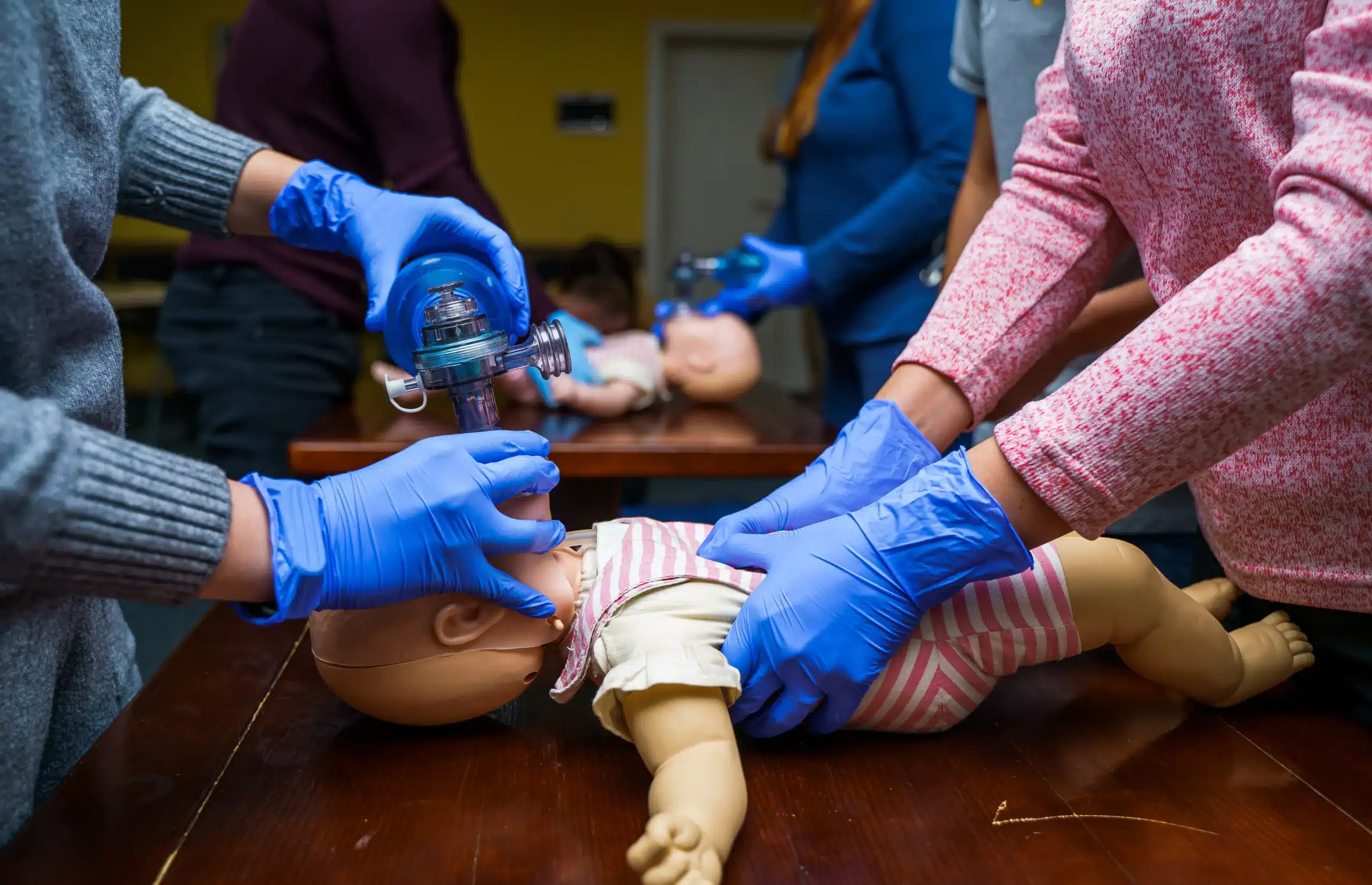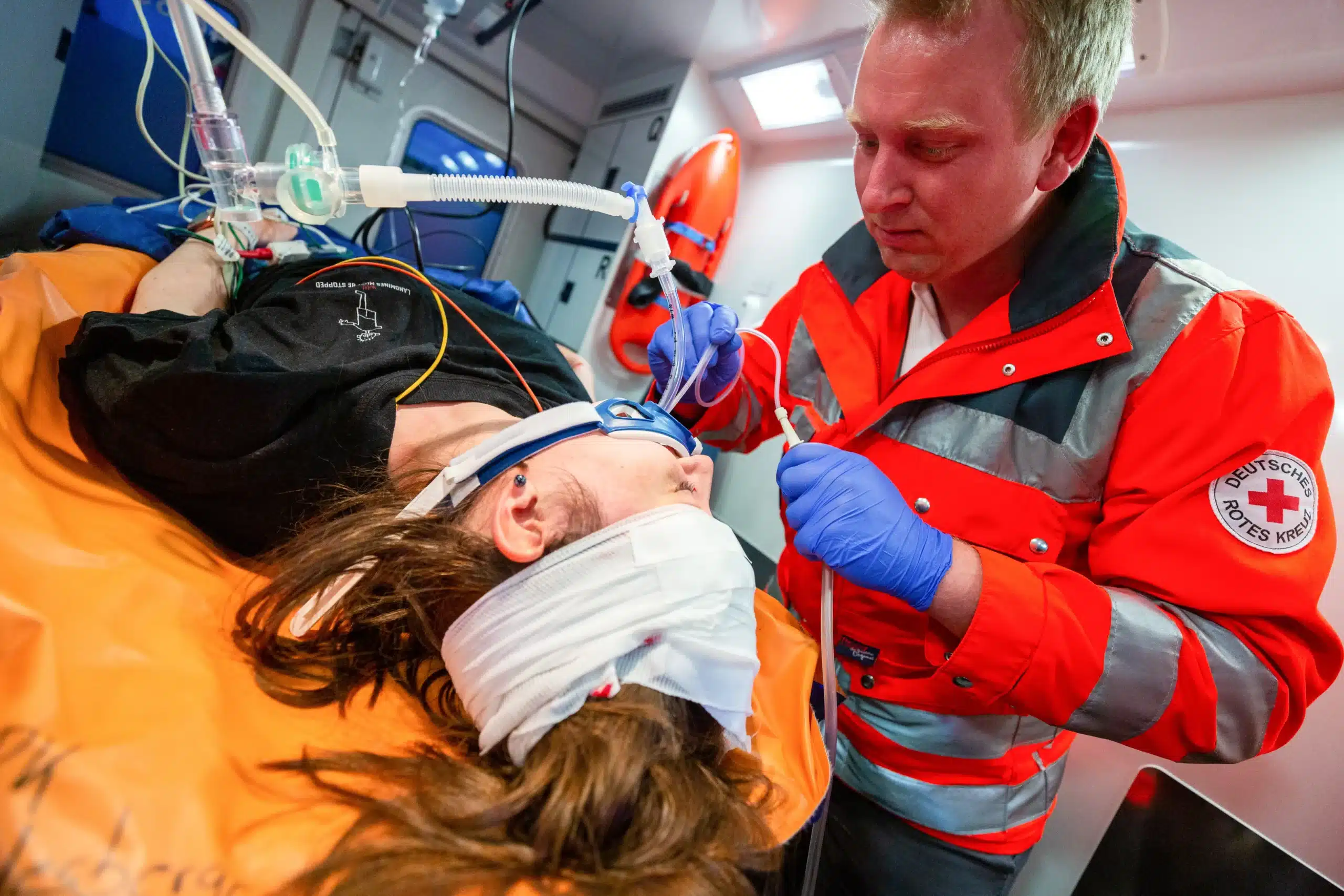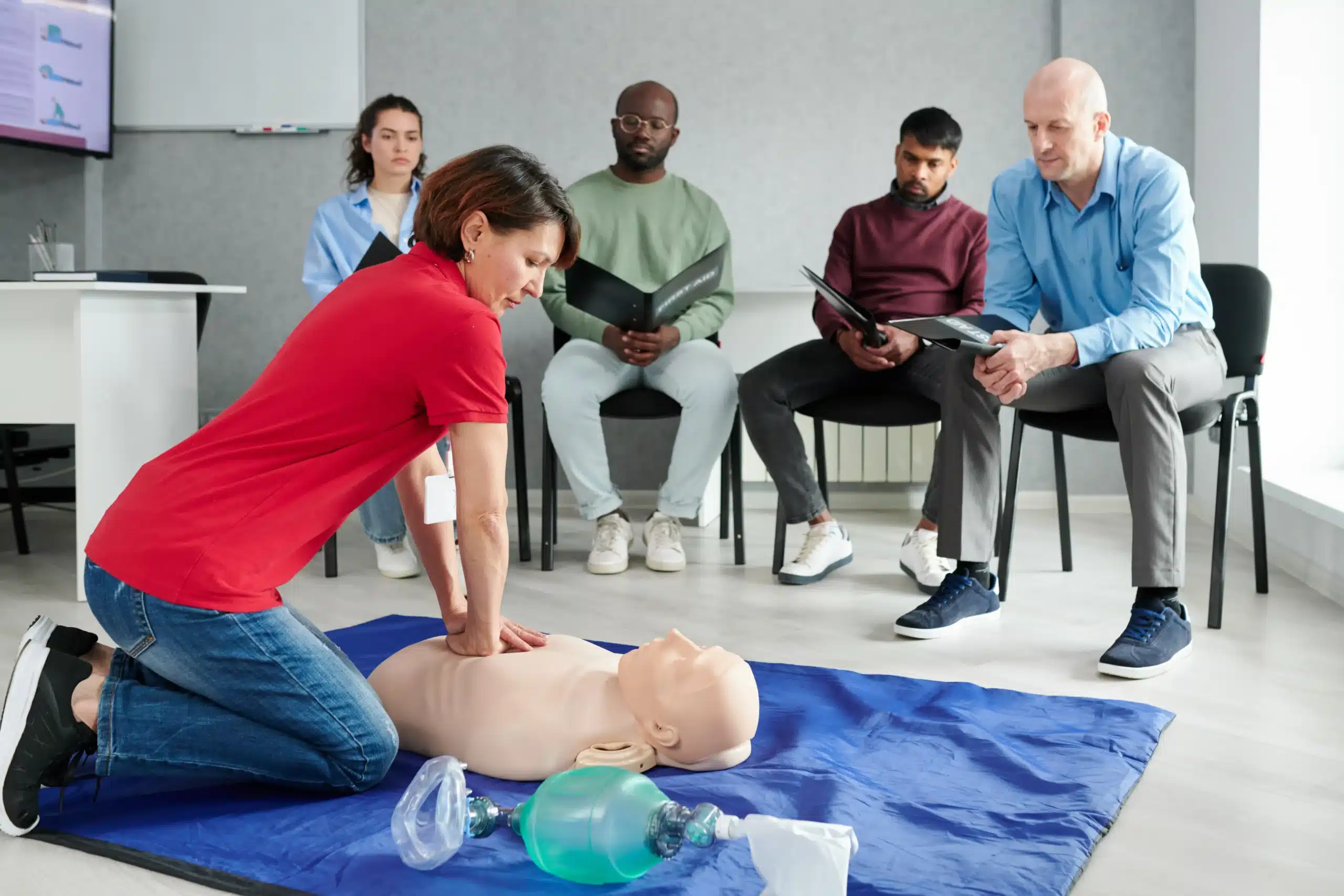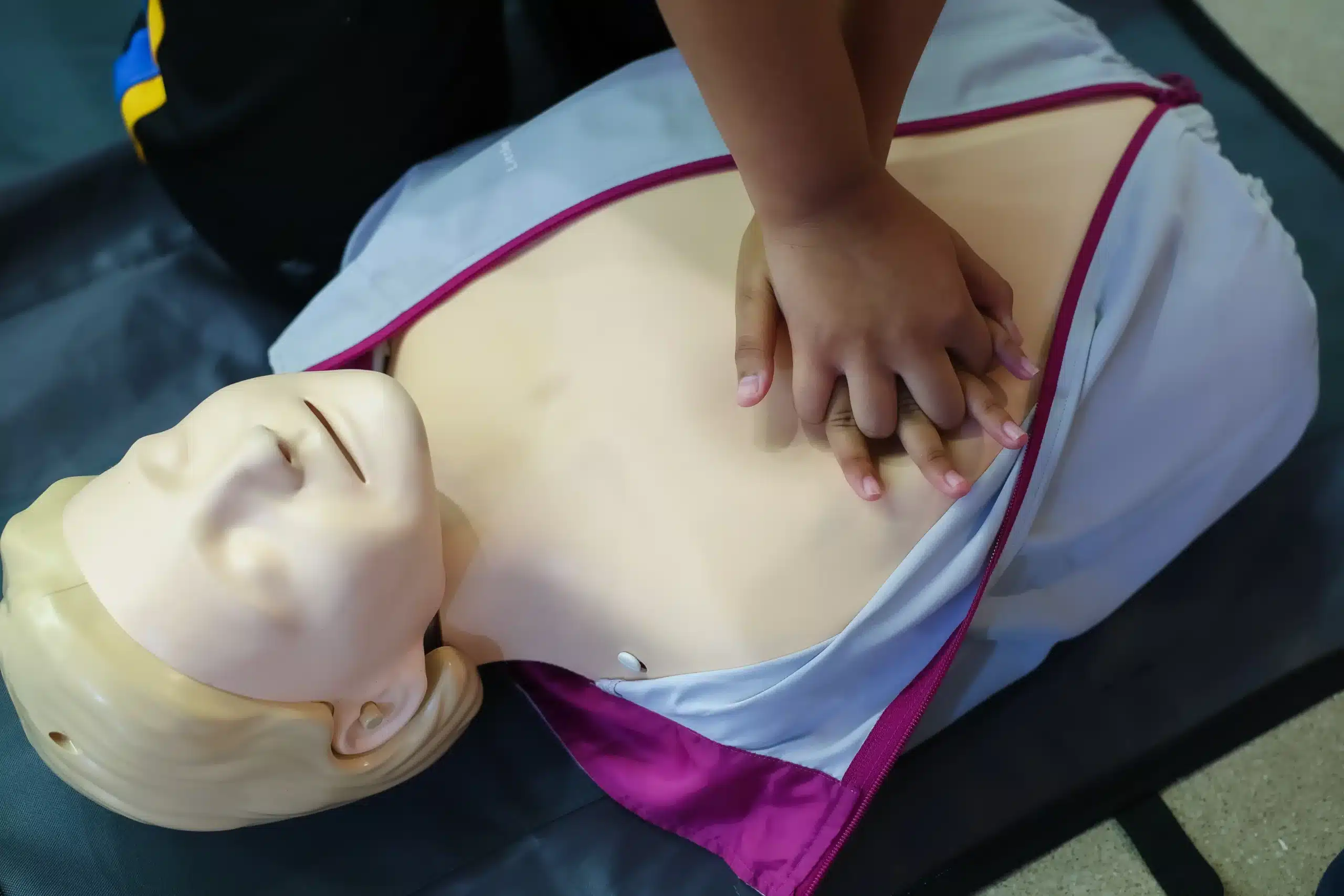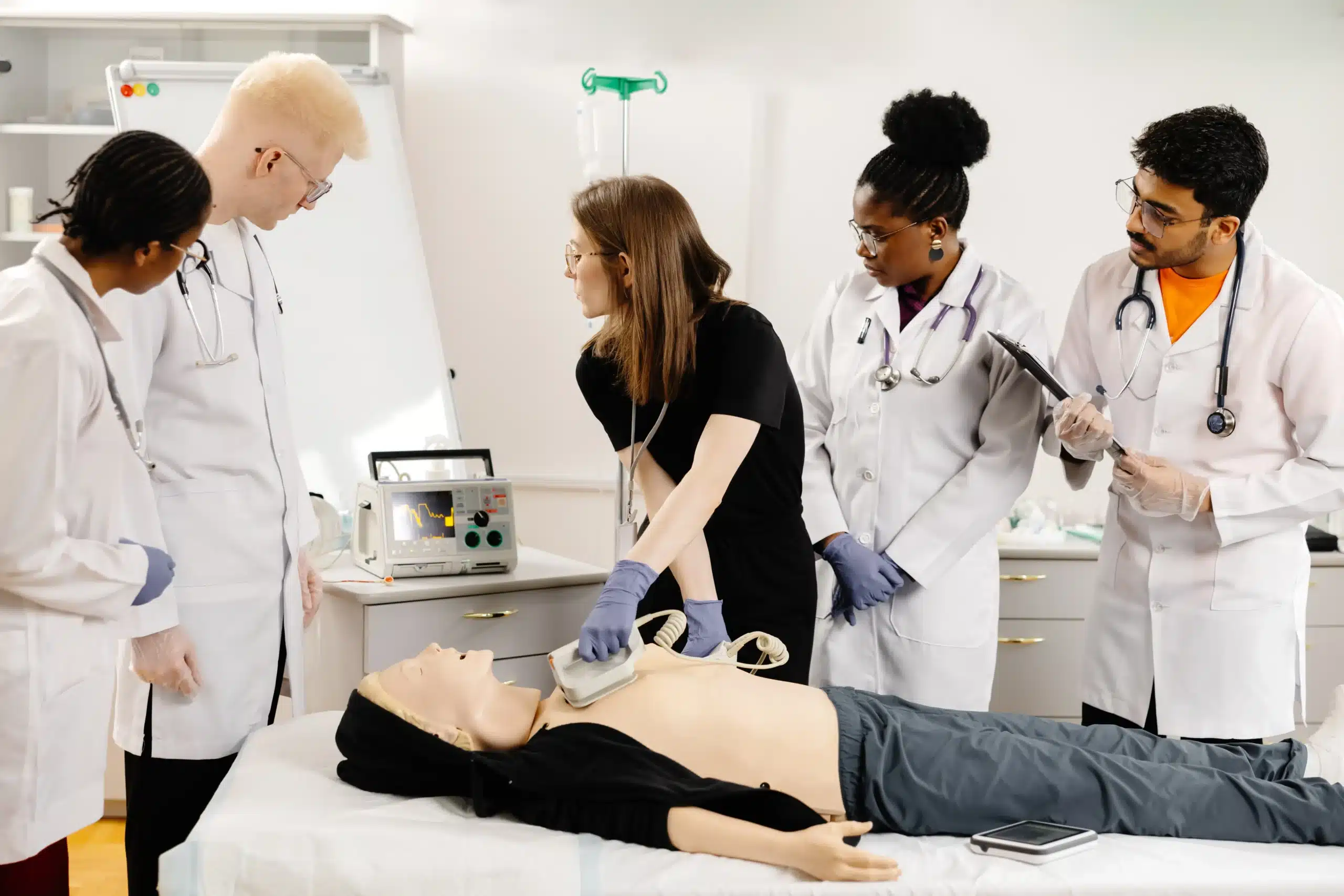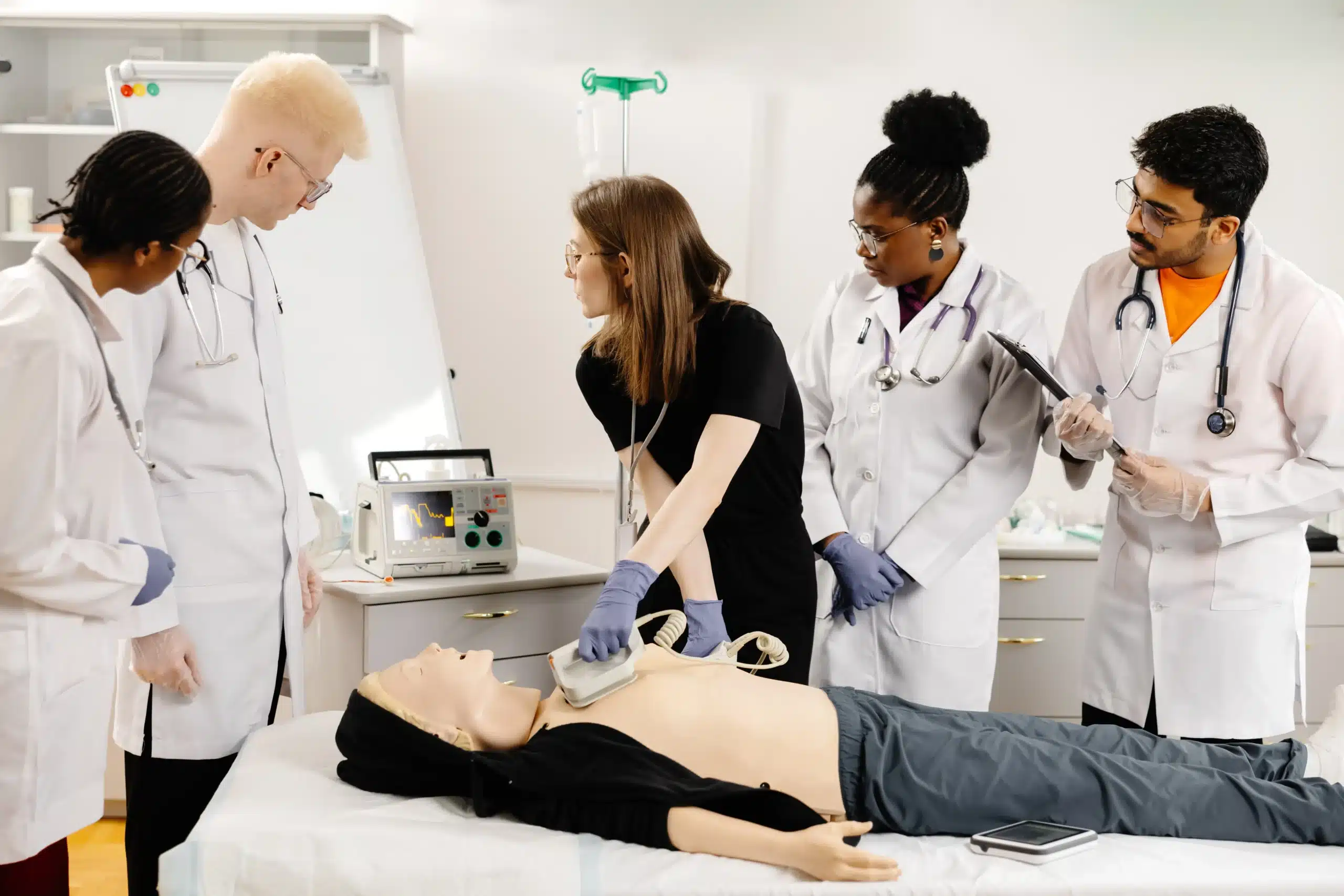In a medical emergency, every second counts. CPR can be the bridge between life and death, providing essential support until paramedics arrive. But knowing how to perform CPR effectively isn’t just for medical professionals—it’s a skill everyone can and should learn. This comprehensive guide will walk you through the essentials of CPR, including various course options, costs, certification details, and how to find the right CPR courses in Fairfield for your needs. We’ll also debunk some common CPR myths and misconceptions, empowering you to act confidently in a crisis. Let’s get started on your journey to becoming a life-saver.
Key Takeaways
- CPR knowledge empowers you to save lives: From healthcare professionals to everyday people, learning CPR provides the skills and confidence to respond effectively in emergencies. Explore the various course options available to find the best fit for your needs.
- CPR training fits your lifestyle: With in-person, online, and blended learning formats, you can find a CPR course that accommodates your schedule and learning preferences. Research providers, compare costs, and consider available discounts.
- Take action and make a difference: Don’t hesitate to perform CPR in an emergency. While certification is valuable, immediate action is paramount. Debunk common myths and focus on learning the techniques that can save a life.
What is CPR?
Cardiopulmonary resuscitation (CPR) is a lifesaving technique used when someone’s breathing or heartbeat has stopped. This can happen due to a heart attack, near drowning, or other medical emergencies. CPR helps maintain blood flow to the brain and other vital organs until professional medical help arrives. The American Heart Association stresses that immediate CPR can double or triple the chances of survival after cardiac arrest.
CPR involves chest compressions and rescue breaths. Chest compressions mimic how the heart pumps blood, while rescue breaths provide oxygen. The specific techniques for CPR have been standardized to ensure effectiveness, as detailed by the National Center for Biotechnology Information. It’s crucial to start CPR quickly in an emergency. The American Red Cross emphasizes that this lifesaving training is valuable for everyone. Learning CPR empowers you to act quickly and potentially save a life.
CPR Course Options
Choosing the right CPR course depends on your background and what you need it for. Here’s a rundown of some popular options:
BLS for Healthcare Providers
If you’re a healthcare provider, this course is essential. It covers the core life-saving skills you’ll use regularly, including adult, child, and infant CPR, clearing airway obstructions, and using an AED. You’ll earn your American Heart Association BLS Provider certification, valid for two years, after completing the course. These courses usually take about four and a half hours. Check our course calendar to find a BLS class that fits your schedule.
Heartsaver CPR/AED
Designed for anyone who might need to respond to a cardiac emergency, the Heartsaver CPR/AED course is a great choice for teachers, coaches, security guards, or anyone who wants to be prepared. You don’t need any prior medical experience. This course also provides a two-year certification and covers adult, child, and infant CPR and AED use, as well as how to help someone who is choking. Visit our Heartsaver CPR/AED page for more information and upcoming class schedules.
Heartsaver Pediatric First Aid
Parents, caregivers, teachers, and anyone working with children should consider this course. It focuses on handling common childhood illnesses and injuries, teaching you how to respond to everything from minor cuts and scrapes to more serious situations like allergic reactions and choking. This course also provides a two-year certification. Learn more and register for an upcoming class on our Heartsaver Pediatric First Aid page.
Costs & Discounts
CPR course costs vary depending on the provider, the type of course, and the format. Knowing what to expect can help you budget and find the best fit for your needs. Let’s break down the typical costs associated with CPR training and explore potential discounts.
Course Pricing
The price of a CPR course depends on several factors, including the level of certification and the techniques covered. Basic CPR and First Aid courses tend to be more affordable than advanced certifications like ACLS and PALS. For example, a basic Heartsaver First Aid course might cost around $45 for a 3–4 hour class, while a BLS Healthcare Provider course could be around $85 for a 4.5-hour session. More specialized courses, such as ACLS and PALS, typically run around $275 for a two-day course totaling 14 hours. It’s always a good idea to check with your chosen provider, like Vacaville CPR Classes, for their most up-to-date pricing. Remember, investing in CPR training is an investment in potentially life-saving skills.
Extra Fees
Beyond the course fee itself, be aware of potential extra costs. Some providers may charge additional fees for things like certification cards, course materials, or online access. If you’re taking an online course with an in-person skills test component, there might be a separate fee for the skills evaluation. Also, if you’re looking to purchase supplies like AEDs, first aid kits, or CPR masks, factor those costs into your budget. Some providers offer free shipping on larger orders, which can help offset some of these expenses.
Discounts & Promotions
Many CPR training providers offer various discounts and promotions, so it’s worth exploring these options to potentially save money.
Group Discounts
If you’re coordinating CPR training for a group, such as coworkers, community members, or a school group, inquire about group discounts. Many organizations, including the Red Cross, offer reduced rates for group training sessions. This can be a cost-effective way to ensure everyone receives the necessary training.
Special Offers
Keep an eye out for special offers and promotions that can help you save on CPR training. Some providers offer seasonal discounts, early bird registration deals, or discounts for specific groups like students or healthcare professionals. Check the websites of training providers and follow them on social media to stay informed about potential cost savings. You can also check if your employer or professional organization partners with any CPR training providers to offer discounted rates. Don’t forget to review Vacaville CPR Classes’ low price guarantee.
Course Length & Format
Choosing the right CPR course often depends on your schedule and learning style. Let’s break down the most common formats: in-person, online, and blended learning. Understanding the differences can help you make the best decision.
In-Person Training
In-person CPR training offers a hands-on learning experience guided by qualified instructors. This format allows for immediate feedback, personalized instruction, and the opportunity to practice skills in a realistic environment. In-person classes are ideal for those who thrive in interactive settings and prefer direct interaction. These classes typically last a few hours, making them a manageable time commitment. Contact us at Vacaville CPR Classes to find a course that fits your needs.
Online Courses
Online CPR courses provide a flexible alternative for busy schedules or limited access to in-person training. You can learn at your own pace and revisit materials as needed. While online courses offer convenience, choosing a reputable provider that aligns with current American Heart Association guidelines is essential. Many online courses also require an in-person skills session to complete the certification process. This blended approach combines online learning flexibility with the practical application of in-person skills practice.
Blended Learning
Blended learning combines online learning convenience with the hands-on experience of in-person training. You’ll typically complete the theoretical coursework online, then attend a shorter, in-person session to demonstrate your skills and receive your certification. This format offers a good balance for those who appreciate online learning flexibility but also recognize the importance of practicing skills in a real-world setting. Blended learning is a popular choice for many professionals seeking CPR certification.
Certification & Renewal
Knowing the different types of CPR certifications and their renewal requirements is key to choosing the right course. Whether you’re a healthcare professional or want to be prepared for emergencies, understanding these aspects will help you make informed decisions.
Certification Types
Several CPR certifications cater to different needs and professions. For healthcare providers—including doctors, nurses, and EMTs—BLS certification is essential. This course from the American Heart Association covers core CPR skills, AED use, and choking relief, with a focus on teamwork and high-quality CPR in healthcare settings.
For those outside the medical field, such as teachers, coaches, or parents, the American Heart Association Heartsaver certifications are a great fit. These courses cover CPR, AED use, and first aid for adults, children, and infants. The best certification for you depends on your specific needs and who you’ll be caring for.
Renewal Requirements
CPR certifications, like most medical certifications, expire. They are generally valid for two years. Staying current with your certification is crucial for maintaining your skills and confidence in emergencies. Check with your certifying organization, such as the American Heart Association, for their specific renewal process. Vacaville CPR Classes offers various renewal courses to help you easily maintain your certification. Recertification usually involves a refresher course covering the latest guidelines and techniques. Don’t let your certification expire—timely renewal ensures you’re always prepared to respond effectively.
Fairfield CPR Training Providers
Finding the right CPR class often comes down to choosing a reputable provider that fits your schedule, budget, and learning style. Here are a few options to explore in and around Fairfield:
American Red Cross
The American Red Cross offers various CPR classes and certifications in Fairfield, NJ. You can choose from in-person classes or a blended learning format that combines online coursework with hands-on skills sessions. Red Cross certification is valid for two years, and they also offer specialized courses for healthcare providers.
Vacaville CPR Classes
While located in Vacaville, Vacaville CPR Classes is a convenient option for Fairfield residents. They offer American Heart Association certification courses in BLS, ACLS, PALS, and NRP, plus CPR and first-aid training. Visit their website for information on schedules and group discounts.
LifeSavers, Inc.
With over 30 years of experience, LifeSavers, Inc. has trained over 250,000 individuals in CPR and First Aid. They offer flexible learning options, including in-person classes at their Fairfield facility, online courses with an in-person skills test, and on-site training.
Community Centers
Local community centers in Fairfield often partner with organizations like the Red Cross to offer CPR training. These programs frequently focus on creating safer communities and may offer both in-person and blended learning options. Contact your local community center to explore their CPR training resources.
CPR Myths Debunked
It’s easy to get confused about CPR, especially if your only experience with it is from TV shows. Let’s clear up some common misconceptions so you can feel confident learning this life-saving skill.
“Only Medical Professionals Can Do CPR”
One of the biggest myths surrounding CPR is that it’s exclusively for doctors and nurses. The truth is, anyone can learn CPR. Bystanders are often the first on the scene of an emergency, and their actions can significantly impact survival rates. Learning CPR empowers you to provide immediate assistance, even before professional help arrives. Don’t let this myth hold you back from potentially saving a life. For more information on dispelling CPR misconceptions, check out resources like MyCPR NOW.
“CPR Always Revives Someone”
Movies and television often portray CPR as a guaranteed revival method. Unfortunately, this isn’t always the case. While CPR is a crucial intervention, it doesn’t always result in a successful resuscitation. Its effectiveness depends on several factors, including how quickly CPR is started and the nature of the medical emergency. It’s important to have realistic expectations while still recognizing the immense value of CPR in increasing the chances of survival. Richmond Training Concepts offers a helpful perspective on the realities and outcomes of CPR.
“You Need Certification to Do CPR”
While getting CPR certified is definitely a good idea (and often required for certain jobs), you absolutely do not need to be certified to perform CPR in a life-or-death situation. In fact, acting quickly is paramount during a cardiac arrest. Don’t hesitate to provide CPR even if you’re not officially certified. Immediate action, even without formal training, can make all the difference. You can find more information about this common misconception at MyCPR NOW.
“CPR Can Hurt More Than Help”
Some people worry that performing CPR might do more harm than good, like breaking ribs. While there’s a small possibility of minor injuries, the potential benefits of CPR significantly outweigh the risks. In a life-threatening emergency, the priority is to keep blood circulating and oxygen flowing to the brain. Remember, doing something is almost always better than doing nothing when someone’s life is on the line. CPR Baton Rouge offers a good explanation of the risks versus benefits of CPR.
Choose & Start Your CPR Training
Getting CPR certified is easier than you think. These four steps will help you get started:
Assess Your Needs
Before you jump into a CPR class, think about why you’re getting certified. Are you a healthcare provider who needs BLS certification? Or are you a parent, teacher, or coach looking for a general CPR and first-aid course? Understanding your needs will help you choose the right course. For example, healthcare professionals often require specific training that covers advanced life support techniques, while community members might focus on basic life support and AED use. If you’re in the Vacaville, Dixon, or Fairfield area, Vacaville CPR Classes offers a range of options.
Select a Course
Once you know what you need, you can start exploring specific courses. Look for classes that offer the right certification level, like American Heart Association certification. Consider factors like course content, format (online, in-person, or blended), and schedule. If you’re unsure which course is right for you, reach out to a training provider like Vacaville CPR Classes to discuss your options. They can help you find the perfect fit. Check their website for a list of available courses.
Register
Found the right course? Great! Now it’s time to register. Many providers offer online registration, making it quick and easy to secure your spot. Check for things like class size, location, and available dates. Don’t forget to look for any group discounts if you’re signing up with friends, family, or colleagues. Contact Vacaville CPR Classes to learn more about registration and available discounts.
Prepare for Training
After you register, take a few minutes to prepare for your training. While CPR classes are designed to be accessible to everyone, a little prep work can make your learning experience even better. Review any pre-course materials provided by your instructor. This might include basic CPR guidelines or information about the skills you’ll be learning. On the day of your training, wear comfortable clothing suitable for hands-on practice. You’ll be working with CPR training mannequins, so comfortable clothes are key. Most importantly, come ready to learn and ask questions! Your instructor is there to support you. For more information about what to expect, visit the Emergency First Response website.
Related Articles
- Online CPR Classes in Dixon: Your Complete Guide – Vacaville CPR Classes
- CPR Renewal in Vacaville: Your Complete Guide – Vacaville CPR Classes
- Online CPR Classes in Fairfield: A Certification Guide
- Why CPR is Important in Healthcare (And How You Can Learn It)
- CPR Certification in Fairfield: Your Guide – Vacaville CPR Classes
Frequently Asked Questions
What if I’m nervous about performing CPR in a real emergency? It’s completely normal to feel a little apprehensive about using CPR in a real-life situation. Remember, the most important thing is to act quickly. Your training will kick in, and even basic CPR can significantly improve someone’s chances of survival. Trust your skills and focus on the steps you’ve learned. Regularly reviewing your training materials and practicing with a friend or family member can also help build your confidence.
How do I know which type of CPR certification is right for me? The best CPR certification depends on your specific needs. If you work in healthcare, BLS for Healthcare Providers is essential. For those outside the medical field, a Heartsaver CPR/AED or Heartsaver Pediatric First Aid course might be more appropriate. Think about who you’ll likely be using CPR on (adults, children, or infants) and choose a course that covers those groups. If you’re still unsure, contact a training provider like Vacaville CPR Classes; they can guide you.
Are online CPR courses as good as in-person classes? Both online and in-person CPR courses have their advantages. Online courses offer flexibility, while in-person classes provide more hands-on practice and direct interaction with an instructor. Many online courses now include a required in-person skills session, combining the best of both worlds. The most important factor is choosing a reputable provider that adheres to current American Heart Association guidelines, regardless of the format.
What should I expect during a CPR class? CPR classes typically involve a combination of instruction, demonstrations, and hands-on practice. You’ll learn the essential steps of CPR, how to use an AED, and how to recognize the signs of a cardiac emergency. Expect to actively participate in practice scenarios using mannequins. Don’t be afraid to ask questions – your instructor is there to help you master these life-saving skills.
How much does CPR certification cost, and are discounts available? CPR course costs vary depending on the type of certification and the training provider. Basic CPR courses are generally more affordable than advanced certifications like ACLS or PALS. Many providers offer discounts for groups, students, or other specific populations. Check with your chosen provider for their pricing and any available discounts. Vacaville CPR Classes, for example, offers group discounts and a low-price guarantee.
